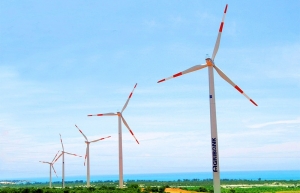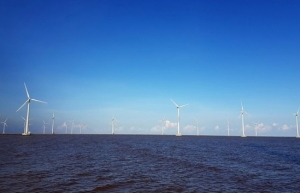EVN loses electricity monopoly, holding 37 per cent of total system capacity
 |
Vietnam's Electricity Regulatory Authority under the Ministry of Industry and Trade has reported a notable shift in the country's power generation landscape.
Currently, the national power system's collective capacity of nearly 80,000MW shows that state-owned enterprises, including EVN, Vietnam Oil and Gas Group (PetroVietnam), and Vietnam National Coal and Mineral Industries Group (Vinacomin), now hold about 47 per cent of the capacity.
Specifically, EVN accounts for 37 per cent, primarily through direct and indirect ownership, with PetroVietnam and Vinacomin representing 8 per cent and 2 per cent respectively – mainly through gas, small hydroelectricity, and thermal power.
The remaining 53 per cent of power generation capacity is divided among private investors with 42 per cent, build-operate-transfer projects with approximately 10 per cent, and imported electricity and other sources at around 1 per cent.
A representative from the Electricity Regulatory Authority stated, "In less than two decades, the structure of power sources within Vietnam's electricity system has undergone significant changes, with state investment declining and private power surging. This shift indicates a move away from the monopolistic control previously held by EVN before 2006."
Presently, EVN directly manages only about 11 per cent of its total power capacity, primarily focusing on crucial multipurpose hydroelectric plants such as Lai Chau, Son La, Hoa Binh, and Tri An.
The remaining 26 per cent is held by three power generation corporations under EVN – Genco 1, Genco 2, and Genco 3. These corporations are currently in the process of equitisation, leading to a gradual decrease in EVN’s shareholding.
Before 2012, the private sector made up less than 10 per cent of the power sources. However, this figure has impressively grown to 42 per cent following government incentives promoting renewable energy development.
Regarding power mobilisation, in the first nine months of 2023, the system's total output reached nearly 210 billion kilowatt hours, marking a 3 per cent increase compared to the same period last year. Of this, the installed capacity of renewable energy sources, standing at nearly 21,000MW and ranking third in the system, contributes close to 14 per cent of the total output.
The evolution of Vietnam's energy sector reflects a broader regional trend towards diversification and liberalisation in energy markets. With the country's increasing openness to private investment and a growing focus on renewable energy, Vietnam's power generation landscape is set to transform further, aligning more closely with international energy and environmental standards.
This shift not only represents a pragmatic response to the increasing energy demands but also illustrates Vietnam's commitment to sustainable development and climate change mitigation.
 | Just 13 per cent ready for KRX system rollout Over 77 per cent of securities firms in Vietnam have successfully tested the Korean Exchange (KRX) system functions, yet a mere 13 per cent are assessed as being ready for the system's live deployment. |
 | Renewable energy set to create new jobs The energy transition will cause many jobs in the traditional energy industry to be lost, but it will also create thousands of green and sustainable employment opportunities in the economy. |
 | Singapore to import 1.2GW of low-carbon energy from Vietnam Singapore’s Energy Market Authority (EMA) on October 24 announced that it has given tentative approval for plans to import 1.2 gigawatts (GW) of primarily wind-generated electricity from Vietnam. |
What the stars mean:
★ Poor ★ ★ Promising ★★★ Good ★★★★ Very good ★★★★★ Exceptional
 Tag:
Tag:
Related Contents
Latest News
More News
- Dat Bike accelerates sustainable mobility (January 07, 2026 | 15:24)
- Innovation to support modern healthcare development (January 07, 2026 | 10:00)
- Six localities record double-digit growth as regional performance diverges in 2025 (January 06, 2026 | 18:00)
- E-commerce market undergoes transformation amid rising competition and regulation (January 06, 2026 | 17:54)
- Vietnam’s industrial output hits seven-year high in 2025 (January 06, 2026 | 17:47)
- GELEX’s credit rating outlook upgraded to 'Positive' by VIS Rating (January 06, 2026 | 16:49)
- Finance sector lays firm groundwork for 2026 after major reform (January 06, 2026 | 15:30)
- Vietnam’s seafood exports surpass $11 billion in 2025 (January 06, 2026 | 08:51)
- Vietnam GDP posts second-strongest growth since 2011 (January 06, 2026 | 08:35)
- Double-digit GDP growth within reach with shift to higher-value expansion (January 06, 2026 | 08:33)






















 Mobile Version
Mobile Version